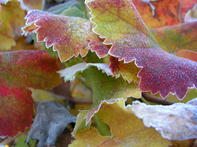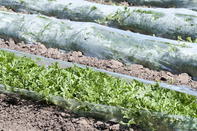In farming areas where frost can damage crops, good management of planting times can limit frost damage during the growth period of crops. Limit crop losses, due to late frost, by planting sensitive crops only after the danger of frost has passed.

This may not always possible or practical for you, as you might miss good prices that come with being the first in the market with your crop. Crop losses, due to early frost, may be limited by planting during the middle or second half of summer.
Growth would be completed before frost starts. It is possible to bring your harvest date forward by propagating seedlings under protection, such as in small tunnels, towards the end of the frost period. When the frost danger is over, these seedlings are transplanted in the field. Small-scale farmers in the Eastern Cape Province grow maize from seedlings, so as to have green mealies earlier.
How to Protect Crops against Frost

In-field tunnels Small ‘tunnels’ can be built using thin plastic sheeting to act like small greenhouses. This sheeting must be supported over the seedlings and weighed down by soil to prevent it from blowing away.
As temperatures under the plastic can become very hot, ventilation might be needed. Uncover the sheeting or remove during daytime if practical.
Be sure to clear away any pieces of plastic left after the harvest as this can pose a risk to animals grazing in the area.
Greenhouses and tunnels In high-frost areas, vegetable production is done in greenhouses or tunnels. However, this can be expensive and requires good management, but high yields may make up for it.
The biggest advantages of vegetable production in greenhouses are obtained when done near big markets (cities) or for exporting (near an international airport). A good example is seen near Krugersdorp. This greenhouse farming area is very close to both Johannesburg and O.R. Tambo International Airport.
In fruit orchards and vineyards In the 1950s old motor oil was burned in drums in the apple and pear orchards of the Koue Bokkeveld, a mountainous area in the Western Cape, on nights when frost damage was expected. This generated heat and a smoke cover but caused pollution and was very environmentally unfriendly.
In the 1960s overhead sprinkler irrigation was activated by thermocouple-activated switches when the air temperature dropped below a set warning temperature.
Now, overhead sprinkler irrigation has been replaced by drip and ground-level micro-sprinkler irrigation so overhead sprinklers are no longer used to limit frost.
In the Napa Valley in California, electric heaters with big fans blow hot air over vineyards to limit frost.
Source Water Research Commission